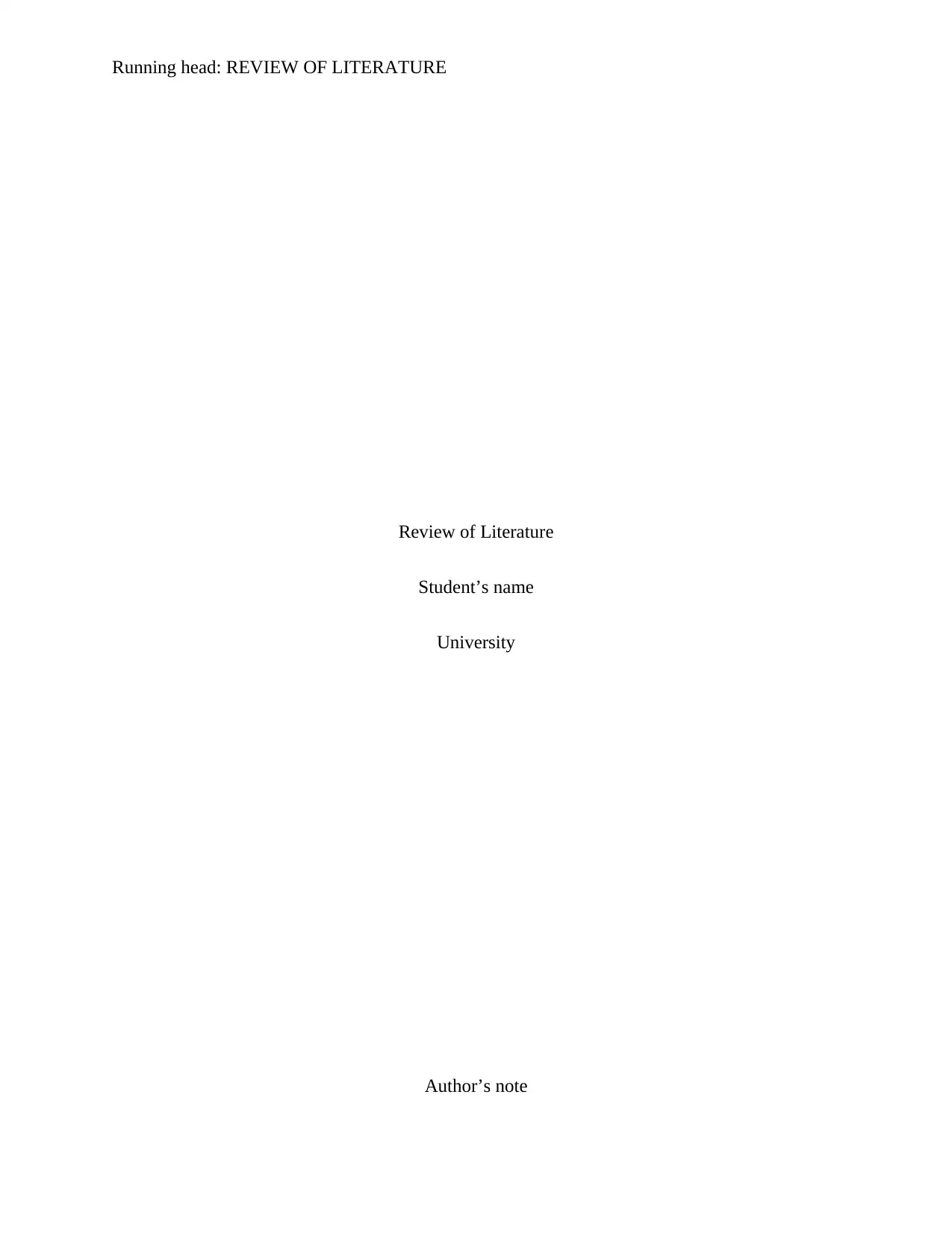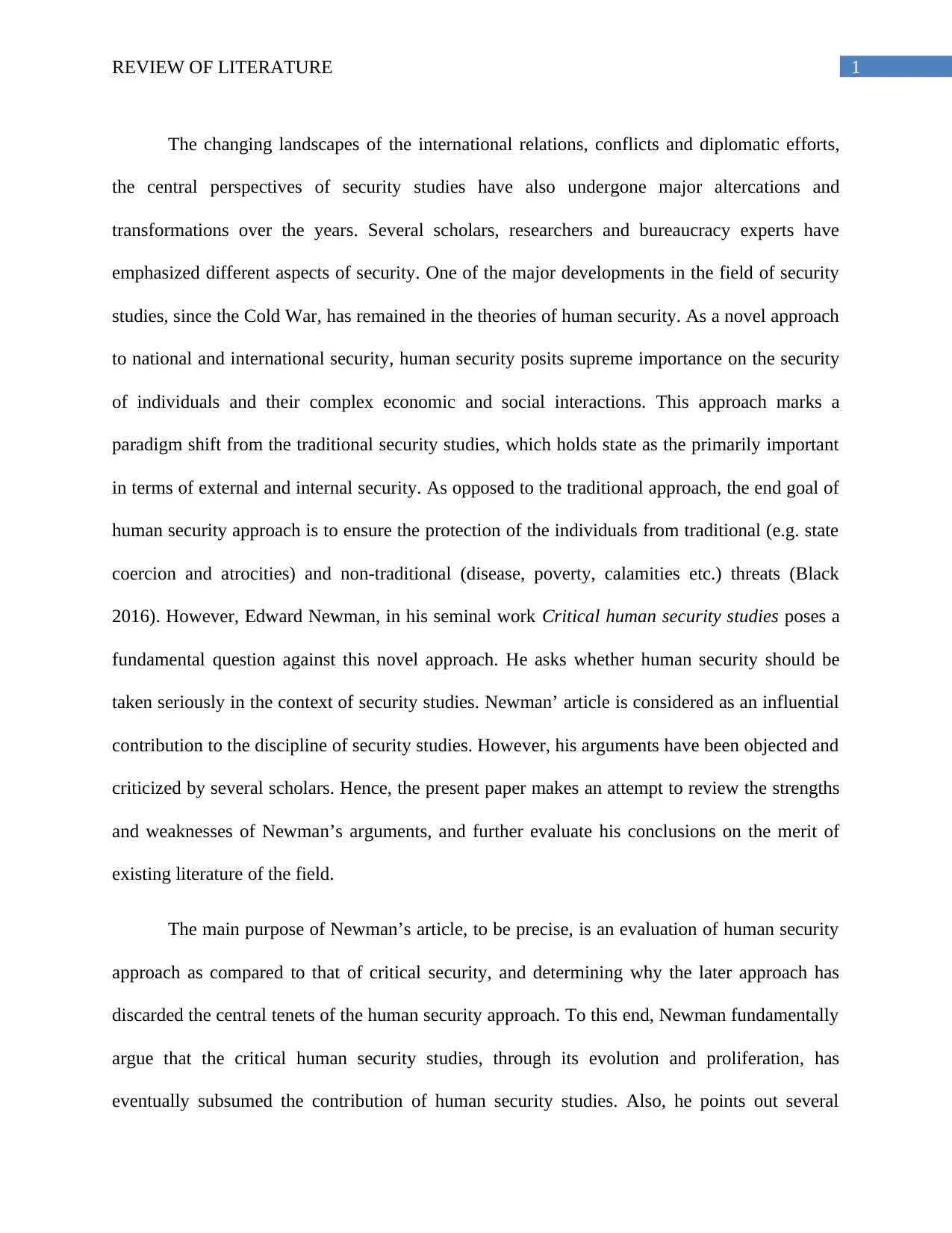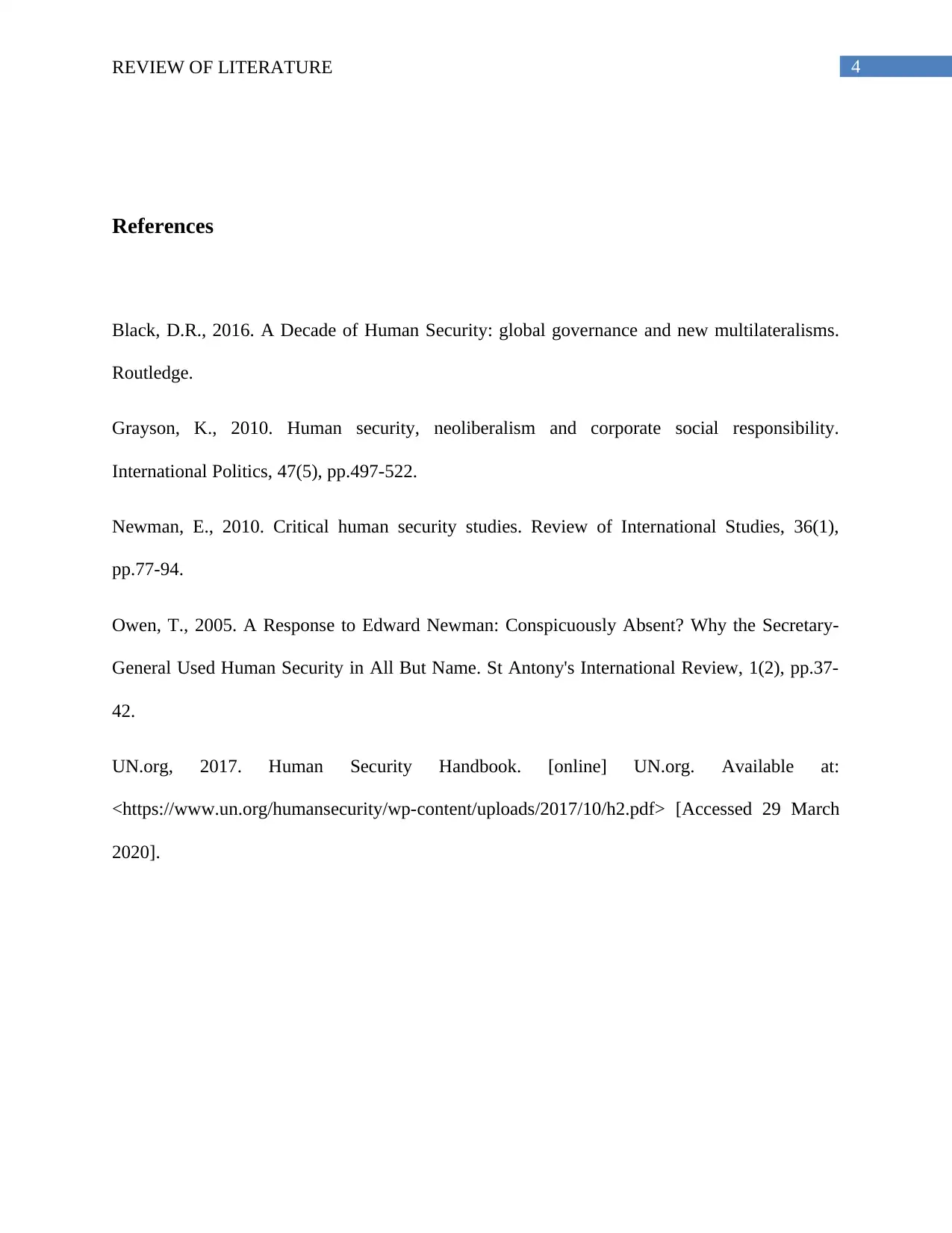Human Security Studies: A Review of Literature and Critical Analysis
VerifiedAdded on 2022/09/06
|5
|1125
|12
Essay
AI Summary
This essay provides a comprehensive review of literature on human security, focusing on the debate between human security and critical security studies. It begins by outlining the evolution of security studies and the emergence of human security as a paradigm shift. The paper then delves into Edward Newman's arguments, which question the significance of human security in the context of security studies, and analyzes the criticisms and objections to Newman's views. The review examines the strengths and weaknesses of Newman's arguments, the conceptual vagueness inherent in human security, and the approach's effectiveness in policy and development studies. It references key scholars and their perspectives, ultimately aiming to evaluate the contributions of human security in the broader field of international relations and security studies, highlighting its theoretical and practical implications. The essay concludes by advocating for a deeper theoretical focus within the scholarship to develop a more critical approach to human security, acknowledging the need for a precise definition and addressing its instrumental role in policy and development.
1 out of 5








![[object Object]](/_next/static/media/star-bottom.7253800d.svg)